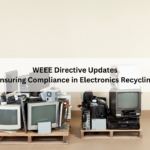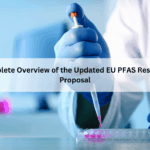ECHA (European Chemicals Agency) has submitted a proposal for a new regulation to restrict microplastic particles that have been added intentionally in consumer and commercial products.
What are microplastics?
Microplastics are tiny particles of plastic material, typically smaller than 5 mm including much smaller nano-plastics. They are deliberately manufactured and intentionally added to products for certain specific reasons and used in a variety of consumer, agricultural, professional, and industrial products such as:
- Cosmetics and personal care products – both rinse-off and leave-on products
- Detergents and cleaning products – encapsulation of fragrances in laundry detergents and cleaning products
- paints, inks and coatings
- Products used in the oil and gas industry
- abrasive blasting media
- Agricultural and horticultural products – fertilizers and plant protection products
Apart from this, some products are designed to intentionally release microplastics as a part of their function; for example, products such as nutrient pills used in the agricultural sector. These microplastic particles accumulate in the environment and may get consumed by animals and fish, which eventually be eaten consumed by human beings, which can be hazardous.
What has been done in the EU?
Many EU states have either banned the intentional use of such microplastics or have proposed bans. The biggest concern with the impact of products is they adversely affect human health and the overall environment. Some of the consumer products that use ‘microbeads’ in ‘rinse-off’ cosmetics, which act as exfoliating and cleansing agents are expected to be banned.
What is ECHA’s assessment?
Intentionally added microplastics are likely to get accumulated in terrestrial and aquatic environments. The alarming factor is that the bio-accumulation of these microplastics is rather persistent and lasts for thousands of years and becomes practically impossible to remove. At present, it is nearly impossible to measure the long-term exposure of these microplastics and their impact on the environment.
Limited availability of data
The risk assessment of microplastics on the environment is highly challenging due to the inadequate availability of information on the after-effects. The food chain becomes more vulnerable to the negative effects of microplastics because of its size and their degradation will result in much smaller particles, which makes it very difficult to identify or control.
The socio-economic impact of such restrictions
ECHA has identified that the agricultural sector will be the most affected industry segment, and the restrictions are likely to result in a difference in the cost of the product. However, ECHA expects the entire activity to be cost-effective in all sectors in the long run, by using environmentally friendly alternatives at better costs.
Labeling requirements
In addition to the ban of microplastics, the new regulations also require manufacturers to provide warnings through labels about potential microplastics released during usage. Some of the products affected by this requirement include:
- Paints, inks, and coatings – both for professional and consumer applications
- Chemicals – esp. oil and gas processes
- Construction products – cement and adhesives
- Medicinal products and medical devices
What does the restriction proposal not cover?
At the outset, few of the naturally occurring polymers such as cellulose, polymers that meet the proposed interim biodegradability criteria, or fertilizing products, are not included. However, the upcoming Fertilizing Products Regulation will keep a check on such products.
How would the restriction work?
The regulation is expected to be effective starting in 2021, in a phased manner to give manufacturers enough time to redevelop, rediscover and find suitable environmental friendly alternatives to microplastics. By this regulation, the release of microplastics is estimated to reduce by 400,000 tons over 20 years.
What do you need to do?
With the enforcement of various environmental regulations, manufacturers have to be more cautious and remain up-to-date, to stay compliant. Ensuing compliance requires extensive efforts in understanding complete regulations, compliance documentation requirements, supplier engagement, finding alternatives and accurate compliance reporting.
Are you affected by this upcoming restriction? Talk to one of our Compliance Experts to learn more and do an assessment.





